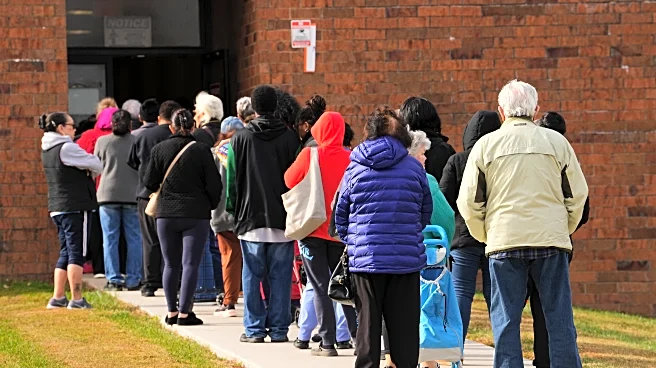What's Happening?
The Trump administration has instructed states to limit SNAP benefits to 65% for November, affecting 42 million Americans reliant on food assistance. This decision follows a funding lapse due to the ongoing
government shutdown. States like New York and Connecticut had begun issuing full payments, but the Department of Agriculture has mandated a rollback. The administration tapped into a $4.65 billion contingency fund to partially sustain SNAP, but this is insufficient to cover all recipients. The administration has resisted using Child Nutrition Program funds to fill the gap, citing concerns over congressional replenishment and potential impacts on child nutrition funding.
Why It's Important?
The reduction in SNAP benefits poses significant challenges for low-income families, potentially exacerbating food insecurity across the nation. The decision highlights the broader impacts of the government shutdown on essential services and vulnerable populations. The administration's reluctance to use Child Nutrition Program funds underscores the complexity of budget allocations during a shutdown. This situation may prompt increased political pressure to resolve the funding impasse and restore full benefits, emphasizing the critical role of government support in maintaining public welfare.
What's Next?
The resolution of SNAP funding issues is contingent on ending the government shutdown and reaching a bipartisan agreement. Senate Democrats are leveraging the shutdown to negotiate healthcare concessions, while Republicans seek to reopen the government. The Supreme Court's temporary pause on a lower court order adds legal complexity to the situation. The ongoing negotiations will determine the future of SNAP benefits and broader government operations, with potential implications for millions of Americans dependent on federal assistance.












